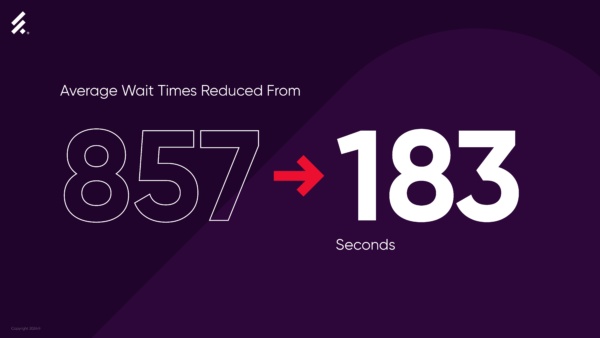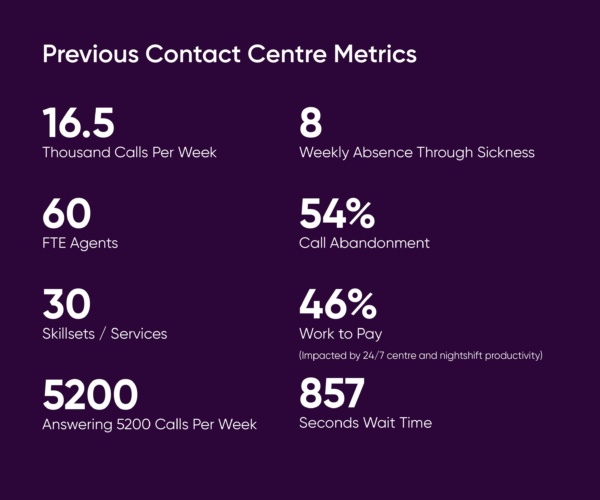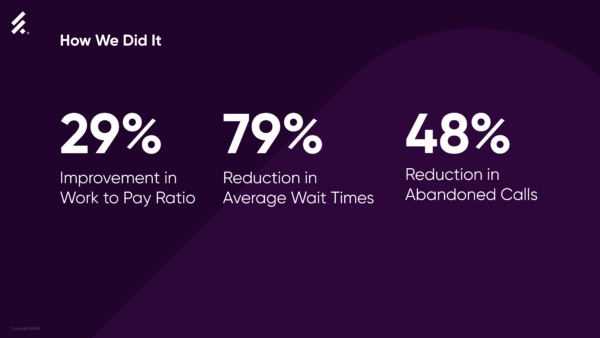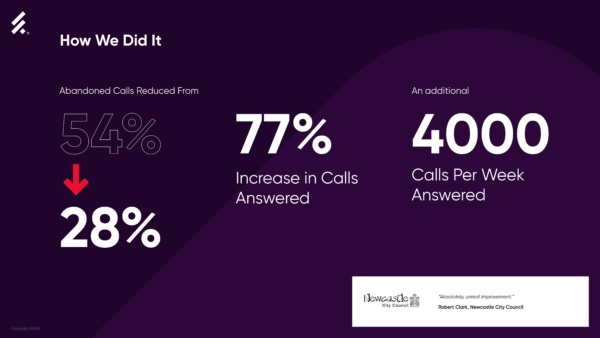
Saving Citizens 100,000 Hours of Potential ‘On Hold’ Time Per Year
Discover the progress that Newcastle City Council have made in their contact centre transformation, realising significant savings and operational efficiencies; all without new technology and additional staff.
Data-led Contact Centre Transformation
Newcastle City Council (NCC) embarked on a contact centre transformation journey to improve customer experience and optimise existing resources. The project, executed in collaboration with FourNet, focused on refining internal processes and workforce management rather than implementing new technology. By conducting a comprehensive Customer Experience Data Diagnostic, NCC identified inefficiencies in call handling and workforce scheduling. Solutions included streamlining call routing, reducing average wait times, and centralising workforce management data. This approach led to significant improvements in call answer rates, cost efficiency, and overall customer satisfaction.
Key Achievements in Numbers



How are they planning to make living easier for their tenants.
'Make Living Easier'
At the heart of this project is Newcastle City Council's strategy to 'Make living easier' for their tenants. This doesn't just mean improving their services around housing but giving tenants easy access to services that support other areas of their lives. Fundamental to achieving their goals is 'IT that Enables an Excellent Customer Experience' and 'Making it Easier for Customers to Access the Services They Need'.
Newcastle City Council were considering rolling out a new Call Back solution to tackle their contact centre demand challenges. Before moving forward wit the Call Back solution FourNet delivered a free Customer Experience Data Diagnostic to make sure that the tool would help them achieve their desired goals of to reduce call volumes and answer more calls. The data diagnostic highlighted that without optimisation of their existing operations to address how calls were handled a Call Back tool would actually increase pressure on staff by adding an extra channel to manage. Additionally, we identified that without changes to internal processes and workforce scheduling, to answer the existing call volumes NCC would need an extra £1m investment into extra staff (27 FTE). Following this, FourNet proposed a plan to tackle NCC's challenges without onboarding new tech or any significant investment into new staff.

What we did


How we did it
1. Removing the ‘spin’
The Data Diagnostic found that NCC was handling between 11 and 20 thousand calls per week, and call volumes were volatile and unpredictable. Adding to this challenge was a high level of 'spin' from tenants abandoning calls and then redialing, which made it hard to get a clear picture of call volumes. This high rate of "spin" from callers repeatedly attempting to reach NCC exacerbated the challenge, contributing to extended wait times and obscuring the true extent of contact centre demand, hindering efforts to accurately assess and manage call volumes.
2. Optimising call routing & improving average speed of answer
Secondly the focus was on reducing the wait times for tenants and improving the average speed of answer. We found that callers had to wait 720 seconds to have their call answered by switchboard operators who would attempt to resolve their queries without rerouting calls. However, 80% of calls were not resolved and were then rerouted to the appropriate team, which meant that callers then had to queue again for an average of 840 seconds. The solution was to have a dedicated switchboard team that would answer calls without trying to resolve them but transfer them directly to the appropriate team who can handle the queries. Switchboard staff were then able to answer calls in 30 to 50 seconds. This change reduced overall wait times from 857 seconds to 557 seconds and meant that tenants didn't have to queue twice; additionally reducing strain on agents as they are only handling calls that they are trained for.
3. Closing the Gap in Workforce Management
At the start of this project, NCC had to pull reports from five separate systems to see the activities of each agent on any given day. The lack of transparency on how many hours agents should be available and ready to handle interactions made workforce planning difficult. To tackle this challenge, FourNet created a report that automated the collection of each report, creating a centralised view of all workforce management data. This not only freed up the time spent by staff manually collating data but also gave NCC a clear picture of the number of agent hours they had available to handle calls without interruption.
What’s Next for Newcastle City Council?
At FourNet, we aim to ensure that each customer is fully equipped to harness the benefits of new technologies effectively.
When NCC came to us looking to integrate a new Call Back solution, we didn't just dive straight in. Instead, we started with a comprehensive Customer Experience Data Diagnostic. This crucial analysis quickly showed that NCC's existing operations weren't
set up to fully leverage the new technology. Recognising this, we prioritised optimising their workforce management to efficiently meet demand. Thanks to the transformative changes implemented, NCC isn't just prepared, they're now robust and ready to handle increased demand with their current team whilst improving citizen experiences. This not only sets the stage for introducing advanced technological solutions but also ensures NCC can explore new avenues for automation, streamline customer interactions, and further boost cost efficiency.